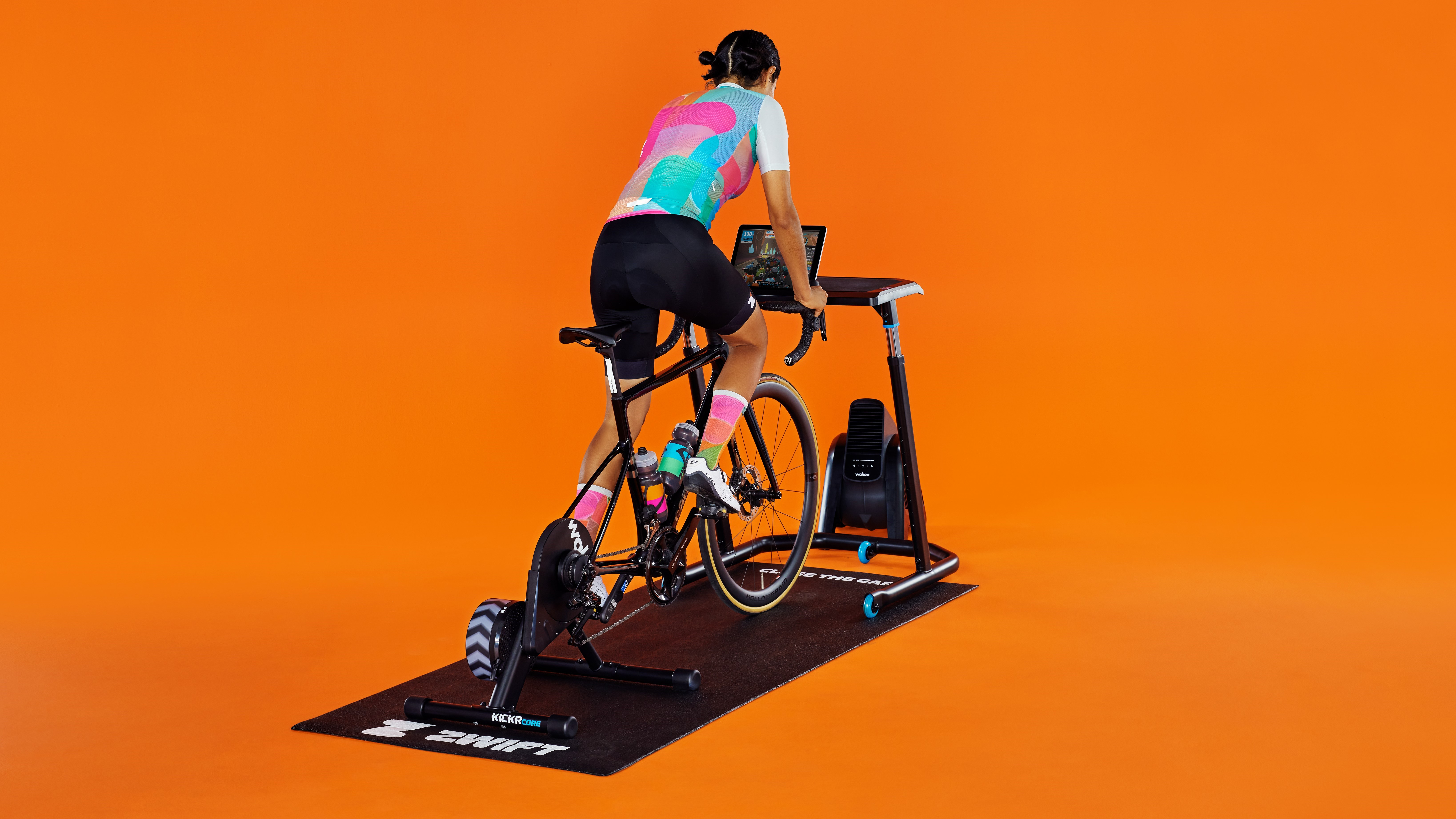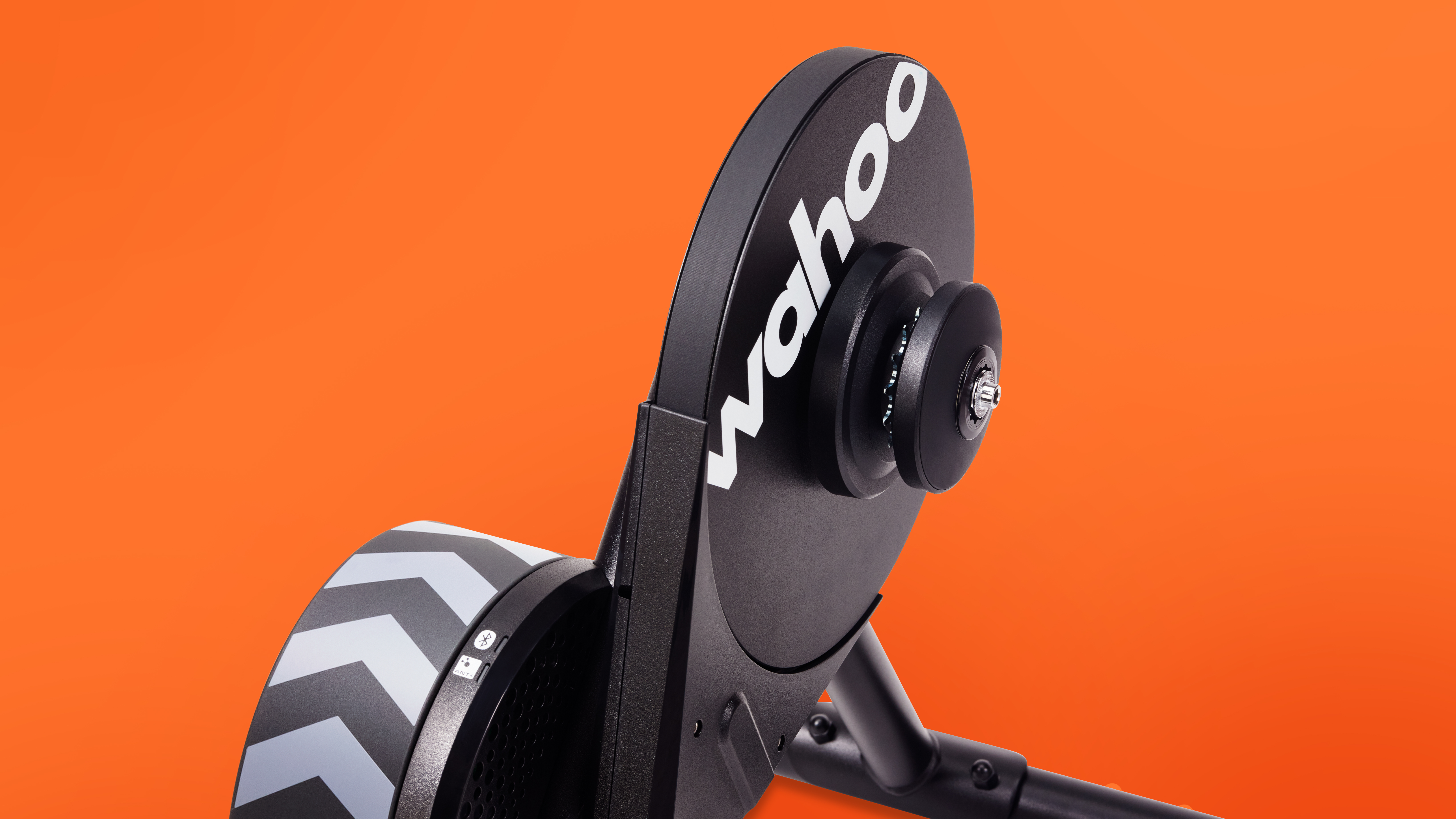What happens next for Wahoo and Zwift?
Litigation seems condemned to history as Zwift and Wahoo hint at 'long list' of integrations following Zwift Hub's demise

With the news today that Wahoo has launched the Kickr Core Zwift One smart trainer, the Zwift Hub One will, from this day forward, be discontinued.
It's a move that marks the end of Zwift's brief but disruptive foray into smart trainer sales, and one that appears to cement the partnership that the two brands vowed to create upon settling the patent infringement lawsuit last September. It also comes just 48 hours after the brand announced its latest round of workforce layoffs, in which the co-CEO Kurt Beidler resigned.
I caught up with both brands to talk about the details of said partnership. I wanted to dig a little beneath the outward-facing alliance; to understand how the two brands went from adversaries to amigos in the space of just a few months. It's no secret that Wahoo wanted Zwift to stop selling the Hub, and as of today, that has happened, but does that mean Wahoo won and Zwift lost? It turns out it's a little more complicated - and in many ways, a lot more simple - than that.
We spoke about how the partnership came to be, including how the court case forced communication between the brands; what progress has already been made; what it could look like going forward, including desires for a future in which Zwift and Systm could integrate; and what it might mean for users around the world.
If there wasn't already enough evidence to back up the newly rejuvenated friendship between the two brands, the interview, which took place on Zoom, was with both brands at the same time. I didn't ask for it to be a joint interview, it just happened. No need for separate slots to cover both brands; the claimed efficiencies they would go on to tell me about were already being proven accurate.
Both interviewees preferred to be known as 'a spokesperson' for their respective brand, so for ease, I'll refer to them by their brand name, but the more we spoke, the more I got a feeling of genuine coalition; two brands singing from the same hymn sheet.

How did Wahoo and Zwift come to settle their differences?
"I think [the management of both companies] came to the realisation that we're going to be better working in partnership," began Zwift.
The latest race content, interviews, features, reviews and expert buying guides, direct to your inbox!
"Not only is it better for the two companies, it's also better for the customers. Ultimately, they're going to get a better experience from us cooperating well, and it's also good for the industry and independent bike dealers when we're playing together. We share the same vision, ultimately, to grow the indoor cycling category."
"With any litigation," Wahoo adds, " it's in everyone's interest to settle, and to settle in a way that's good for both companies. And that's where we ended up. It was quite an easy partnership to slip back into again, once we got that out of the way. We've both got the same goal; we want to get more people riding indoors. We want to sell more hardware, Zwift wants to sell more memberships. Together we're stronger to achieve that goal than fighting each other."
Court cases take time, effort, and money. After a judge ruled against Wahoo's temporary injunction (which if approved would have forced Zwift to pause sales of the Zwift Hub) in April 2023, the process was set to go to a jury trial, as reported by DC Rainmaker at the time, with the date set to April 2024. If the pair hadn't settled, this process would still be no closer to a resolution today.
"It's costly, it takes a lot of senior management's time, and lawyers make a lot of money," explained Wahoo, before adding that a "good indication of why it happened is how naturally everybody's falling in together and working together [since]".
"The two teams have fallen together really easily and really quickly, and I think this is only the start of the good stuff that will come out of this relationship. There's lots more to come."
"A court case does force you to start talking again," adds Zwift. "And then you realise, once again, that you do share the same goals and common ground."
A recent example of two sides working together well is the launch of the recent Kickr Run smart treadmill, for which Zwift created a virtual course to let Wahoo run tests. In a way, it flashes back to Zwift's inception in 2015, three years after the original Wahoo Kickr was launched, and how the two products grew in synchronicity as the indoor cycling landscape evolved.
"Seeing that again with the run products—us being able to collaborate—is ultimately going to lead to a better experience for the hardware, the software, which, as I said, that's a benefit to the customer," Zwift explained.

It's not sexy, but it's progress
Since the settlement's announcement in September, which as both brands highlighted feels like an eternity ago, it's been all systems go. From a headline-grabbing news perspective, the timeline of events includes the initial cross-selling of Wahoo products on Zwift.com and the inclusion of Zwift's subscription with Wahoo's products, the introduction of new Zwift worlds, the discontinuation of the Zwift Hub Classic, the introduction of Hub One along with virtual shifting via Zwift Click and Zwift Cog, the Zwift Games UCI eSports Worlds competitor, the Wahoo Kickr Run and now today, the introduction of Kickr Core Zwift One alongside the discontinuation of Zwift Hub One.
But as both brands would go on to explain, that only scratches the surface.
"You're starting to see early signs of increased geo distribution as well," explained Zwift. "It's something that Wahoo's really helping us with. So the Kickr Core Zwift One is going to be available to purchase in Canada and Australia from late March."
"That's adding significant markets that we were unable to serve with Hub."
Wahoo adds "expanding distribution probably doesn't feel like a big sexy announcement, but it's really important to customers, and that's where Wahoo's expertise in logistics and all of that side of things is helping this relationship."
"There's a lot going on behind the scenes. Things like improving distribution, all of that sort of stuff is really important to grow the category."
Perhaps surprisingly for an online business, Zwift also talks about how working with independent bike shops is another area that is aided by the partnership.
"Something that is not that widely appreciated just yet, is the availability to bundle Zwift with the purchase of Wahoo products through independent bike dealers. I think we're both really excited about that. Previously, it was something only really offered on zwift.com, it then expanded to wahoofitness.com. Now, independent dealers are able to upsell trainers, and customers can get a year of Zwift via the Wahoo Fitness app when they set their trainer up."
"It's a further incentive for independent bike dealers to sell through their stock and give customers reasons to go into stores. Because we all know, stores are the best place to get advice."
Speaking of getting advice, one other area in which the two companies are now closely tied together is in aftermarket support.
Zwift describes it as an "improved collaboration between our respective customer support teams," and goes on to explain that "they're both synced up and helping one another diagnose bugs and potential customer problems, so that whether a customer's going to zwift.com for support or wahoofitness.com, they can get the support they need without having to be bounced around between different companies."
"If they bought the Kickr from Zwift, they can go to Zwift and get the support they need, and vice versa."
Elsewhere, Zwift also teases some "exciting content coming from both brands over the coming months", explaining that the two brands now also have an opportunity to collaborate on sponsorships. Whether that means we'll see Zwift-sponsored Mathieu van der Poel in Wahoo adverts, or Wahoo-sponsored gravel racer Ian Boswell training for Unbound on Zwift, we'll have to wait and see.

Why has the Zwift Hub been discontinued?
At this point in the conversation, I wanted to understand whether or not Zwift was actually happy with the current situation. This time last year, it had one of the leading budget indoor smart trainers on the market. It had massively undercut its competitors on price to the point of being a bit of a no-brainer purchase for anyone shopping in that segment. It was well on the way to owning the customer journey from beginning to end, hardware and software.
Wahoo's desire at the time was to have the Zwift Hub trainer removed from sale. It had already succeeded in getting the JetBlack Volt – the trainer whose design Zwift licensed when creating the Hub – removed from sale in the USA and Europe, and it was seeking a temporary injunction against the Hub for the duration of the lawsuit.
Fast forward to today, and the Zwift Hub is no longer on sale. Zwift has its Click and Cog add-on, as well as Zwift Play, but Zwift is now actively promoting the Wahoo Kickr Core as the go-to smart trainer for Zwift. Had Zwift lost?
"I think it's important to remember," begins Zwift. "We didn't make any secrets about Hub, we made updates on the firmware side and introduced new innovations, but it started off as a JetBlack Volt. So it's not a big change in that regard. Now we're just collaborating with Wahoo."
"The reason we went into hardware was not to make a business out of selling hardware. The reason we went into hardware was to simplify the customer journey, making it easier for them to get started. That was one of the biggest barriers to entry that customers had and the reason we launched Hub was that people struggle to understand the hardware that they need to use Zwift."
"A lot of people are intimidated by things like taking a back wheel off, they are unsure about gear compatibility, what gears they need to choose, they might be put off by the tools that they need, like fitting and taking off a cassette. Those are all things that we looked to solve with Hub, in terms of ease of use. All of those things have carried over to the partnership we have with Wahoo."
"And then the other thing was cost. Cost was the big barrier to entry for a lot of people and I think that the introduction of Hub changed things, and that is still changed."
Whether or not you buy into the notion that Wahoo has 'won', there's one area in which it has certainly had to take a hit. In 2022, the Kickr Core was priced at £699 / $899, without a cassette and without any additional subscription.
Nowadays, the Core is £549 / $599, with a choice of cassette or the Zwift Click/Cog bundle, and 12 months of Zwift bundled in.
Naturally, we don't know the economics behind the revenue share for that Zwift subscription, nor do we know what Wahoo pays for its cassettes, but has Wahoo been forced to forego some of its profit margins?
On the contrary, Wahoo explains it away as "pure economics."
"The more products you make, the more you sell, the lower the price becomes…We feel together we can sell a higher volume of product, which means we can bring the price down to the customer."

What does the future hold?
Despite my cynicism about the two sides' motivations for partnering up, I get a genuine sense of optimism from both Wahoo and Zwift about the opportunities it can bring from a business sense, for the benefit of the consumer, and therefore for the future of the indoor cycling category.
Both brands have had a busy winter and experienced a lot of change, but each move has helped cement their position as a leading player in the space.
For example, when the UCI chose to work with the extremely wealthy Abu Dhabi-based MyWhoosh for the UCI Esports World Championships, it was a blow to Zwift who had hosted the previous three events. Zwift openly admits it "had hoped to deliver another," but within hours of the UCI's press release announcing the format of the Worlds, Zwift had its own announcement for the Zwift Games.
More recently, Wahoo has telegraphed its intentions to repeat its cycling success in the running market, with the launch of the Kickr Run smart treadmill. Wahoo even hinted at a future in which Wahoo X software, which houses the Systm program of indoor cycling, running, mental training, strength, yoga and even swimming workouts, could partially integrate into Zwift.
"Integrated is certainly something we'd like to get to, so you could do your workouts on Zwift." Wahoo confirmed, before explaining that the current focus is consolidating its own apps into one.
"We have done a lot in a short space of time. And you know, there's a long list. We're just kind of working through it."

Josh is Associate Editor of Cyclingnews – leading our content on the best bikes, kit and the latest breaking tech stories from the pro peloton. He has been with us since the summer of 2019 and throughout that time he's covered everything from buyer's guides and deals to the latest tech news and reviews.
On the bike, Josh has been riding and racing for over 15 years. He started out racing cross country in his teens back when 26-inch wheels and triple chainsets were still mainstream, but he found favour in road racing in his early 20s, racing at a local and national level for Somerset-based Team Tor 2000. These days he rides indoors for convenience and fitness, and outdoors for fun on road, gravel, 'cross and cross-country bikes, the latter usually with his two dogs in tow.